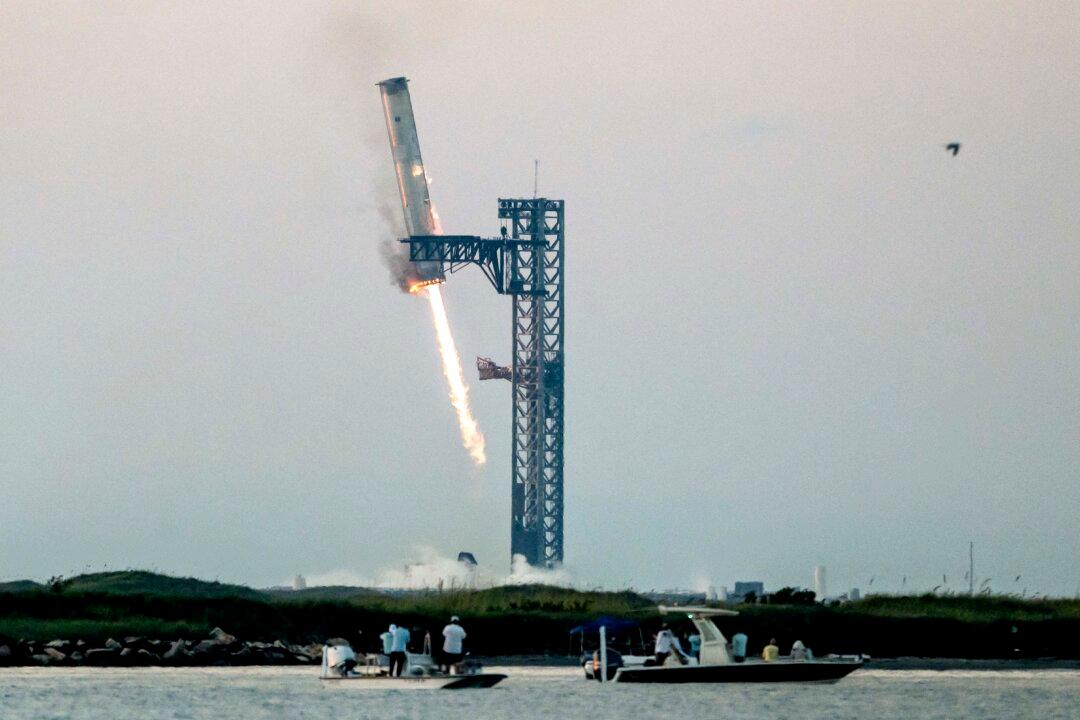SpaceX, in its fifth Starship test flight on Oct. 13, caught its returning giant booster back at the launch pad with mechanical arms.
The rocket’s first stage “Super Heavy” booster lifted off at 7:25 a.m. CDT from SpaceX’s Boca Chica, Texas, launch facilities, sending the Starship second-stage rocket toward space before separating at an altitude of roughly 40 miles to begin its return to land—the most daring part of the test flight.





